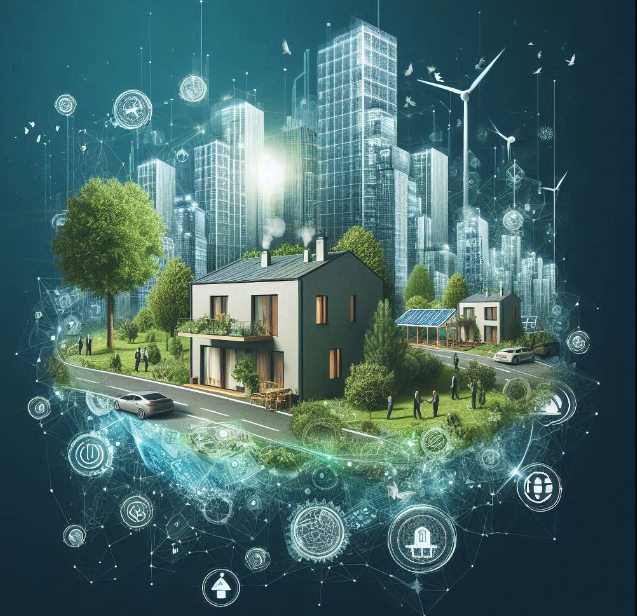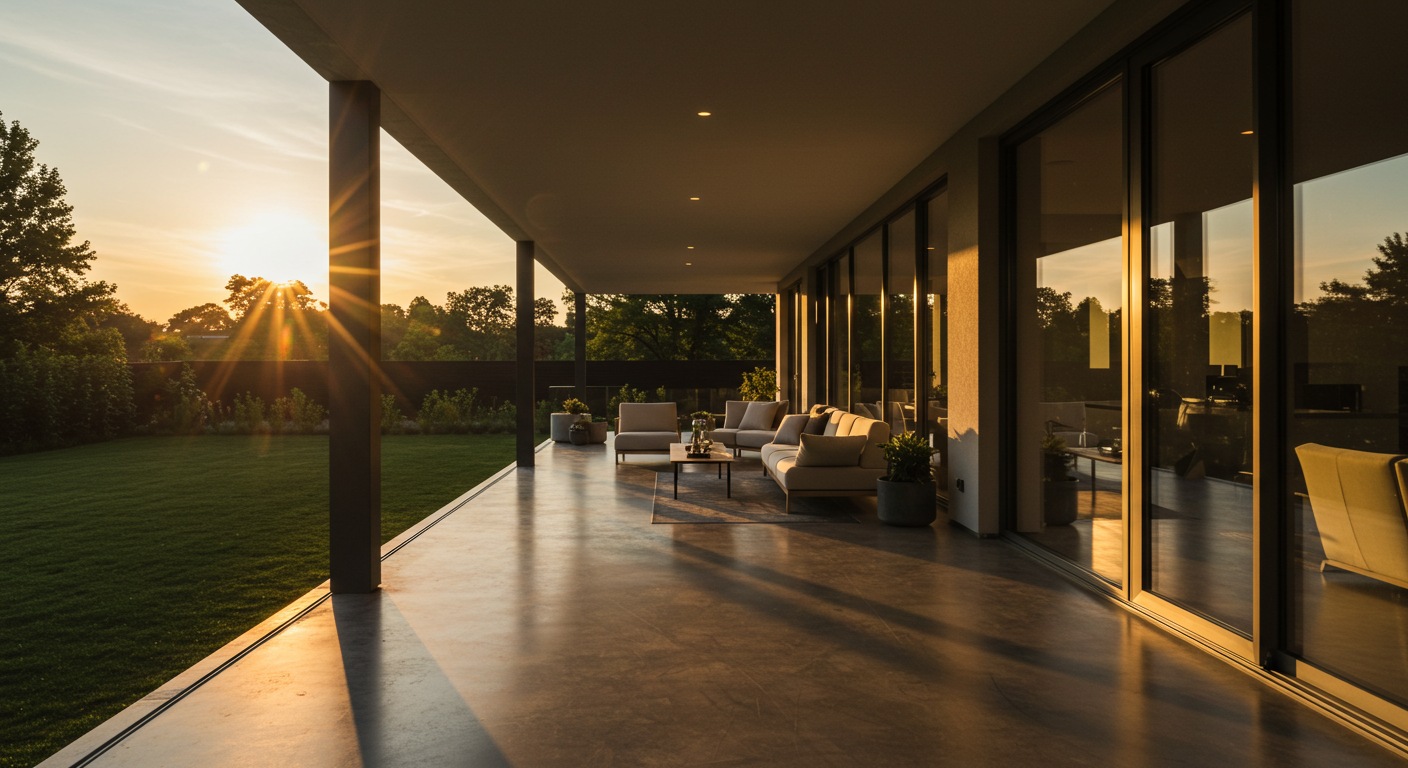The term ‘sustainable housing’ is being increasingly used along with green home or eco-home and has become a fast-growing trend that lays much emphasis on energy efficiency, resource conservation, and environmental responsibility.
These homes are designed with extreme care to reduce their impacts on the planet to a minimum while offering a comfortable interior living environment which is healthy.
Must Also Read: Top 20 Real Estate Market Predictions for 2024/2025: What Should We Expect?
Characteristics of Sustainable Housing
Sustainable housing has to do with different principles that distinguish it from conventional housing. Among the core characteristics include:
- Energy Efficiency: The homes are engineered to optimize the use of energy, reducing reliance on fossil fuels and lowering utility bills. This is achieved through the installation of high-quality insulation, energy-efficient appliances, and renewable systems such as solar panels.
- Resource Efficiency: Green homes are all about conserving natural resources such as water and building materials. To this end, common strategies include rainwater catchment, low-flow fixtures, and specification of recycled or sustainably sourced materials.
- Environmental Stewardship: Arguably, the central objective of green housing is to minimize one’s impacts on the environment through reduced pollution and preservation of biodiversity, among other environmental concerns, both during and subsequent to house construction.
Benefits of Sustainable Living
Choosing a sustainable home offers multiple benefits for individual people and the entire environment. These benefits include environmental, financial, health, and social parameters.
1. Environmental Benefits
- Carbon Footprint Reduction: Sustainable homes reduce greenhouse gas emissions greatly through renewable energy sources and resource efficiency.
- Water Conservation: Rainwater catchments and water-efficient appliances make for water conservation of this vital resource.
- Reduction of Pollution: The use of sustainable materials and reduction in energy consumptions are major ways by which sustainable homes help reduce pollution, thus giving a better air and water quality.
2. Financial Benefits
- Lower Utility Bills: Energy efficiency in designs and appliances could lead to considerable reductions in the amount of energy used, thus giving a reduced utility bill.
- Increased Property Value: Sustainable homes will often raise property values due to their desirability, long-term benefits, and alignment with toughening environmental standards.
| Feature | Traditional Homes | Sustainable Homes |
|---|---|---|
| Average Energy Cost (Annual) | $2,500 | $1,200 |
| Average Water Usage (Gallons) | 150,000 | 80,000 |
| Average Resale Value Increase | 2% | 5% |
3. Health Benefits
- Improved Indoor Air Quality: Sustainable homes are made from nontoxic materials and are well-ventilated, creating much healthier interior environments.
- Reduced Exposure to Toxins: Because homes avoid harmful chemicals in their construction and finishes, sustainable living can minimize toxins among occupants.
4. Social Benefits
- Contribution to a Sustainable Future: The choice for a sustainable home is a proactive step in making the world a more sustainable and resilient planet.
- Social Connection: Sustainable living may be lived in eco-friendly communities, thus fostering a sense of community and shared values.
6 Types of Sustainable Homes
The concept of sustainable homes comes in many forms with varying characteristics and benefits. Some of the most prevalent types of sustainable homes include:
| Type of Sustainable Home | Description | Key Features |
|---|---|---|
| Green Homes | Built using environmentally friendly materials and practices. | Solar panels, energy-efficient appliances, sustainable landscaping. |
| Eco-Friendly Homes | Similar to green homes but with a broader focus on sustainability. | Energy efficiency, water conservation, waste reduction. |
| Passive House Design | A rigorous standard for energy efficiency in a building, reducing its ecological footprint. | High insulation, airtight construction, efficient ventilation. |
| Off-Grid Living | Homes that operate independently from the electrical grid. | Renewable energy sources like solar or wind power, self-sufficiency. |
| Zero-Energy Homes | Homes that produce as much energy as they consume. | Net-zero energy consumption through renewable energy sources. |
| Net-Zero Homes | Homes that produce more energy than they consume. | Energy-efficient design, renewable energy generation, contributing to the grid. |
a.) Green Homes
These are houses built in consideration of minimizing environmental impact. They typically feature a renewable energy system, energy-efficient appliances, and sustainability in the building materials. According to Green Building Council, it is estimated that green homes may save up to 30% in energy consumption compared to conventional homes.
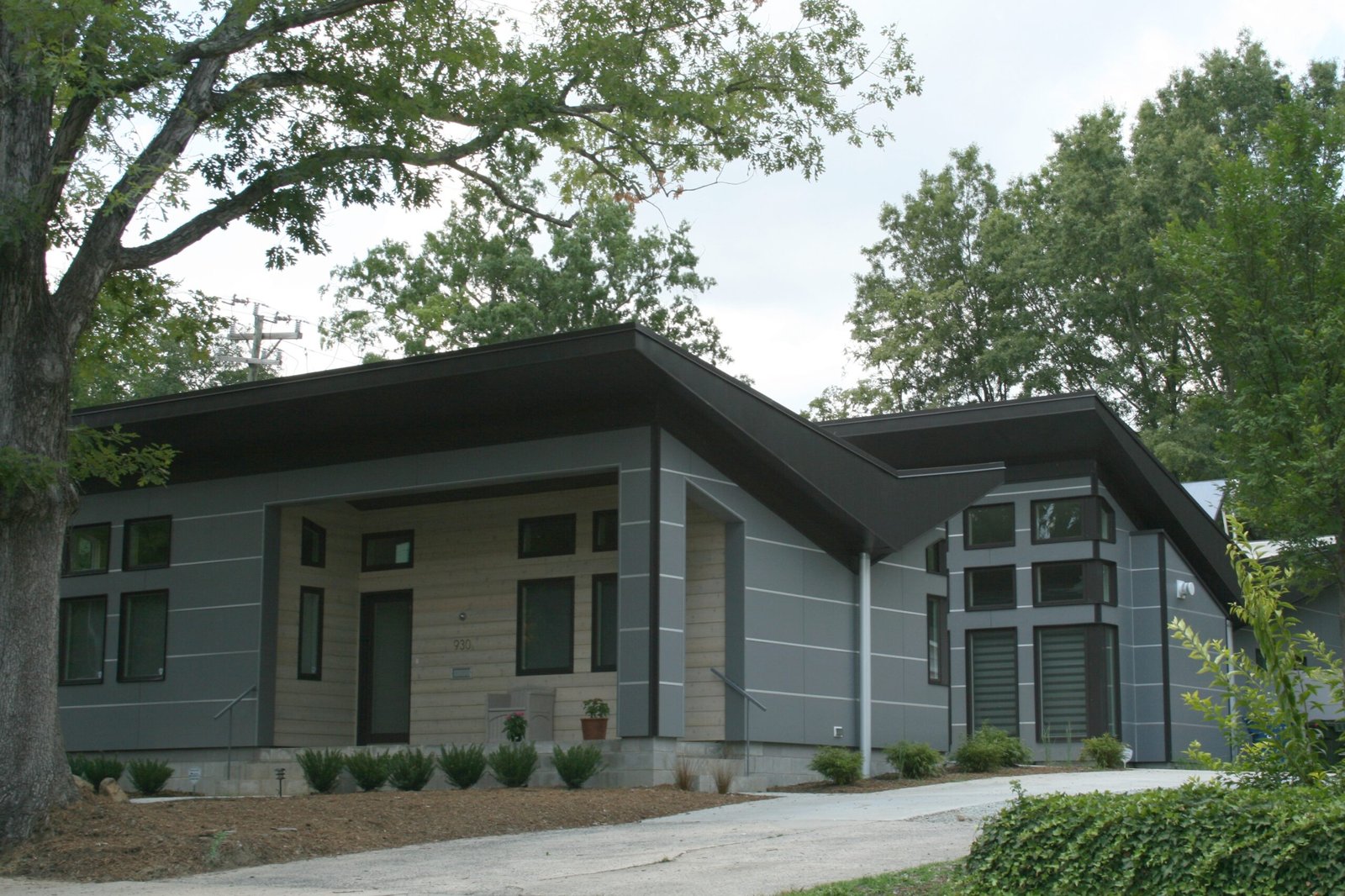 Image source: Wikipedia
Image source: Wikipedia
b.) Eco-Friendly Homes
Similar to green homes, these houses are equally concerned about energy efficiency, conservation of water, and waste reduction. They may also use organic materials and non-toxic finishes for further improving indoor air quality.
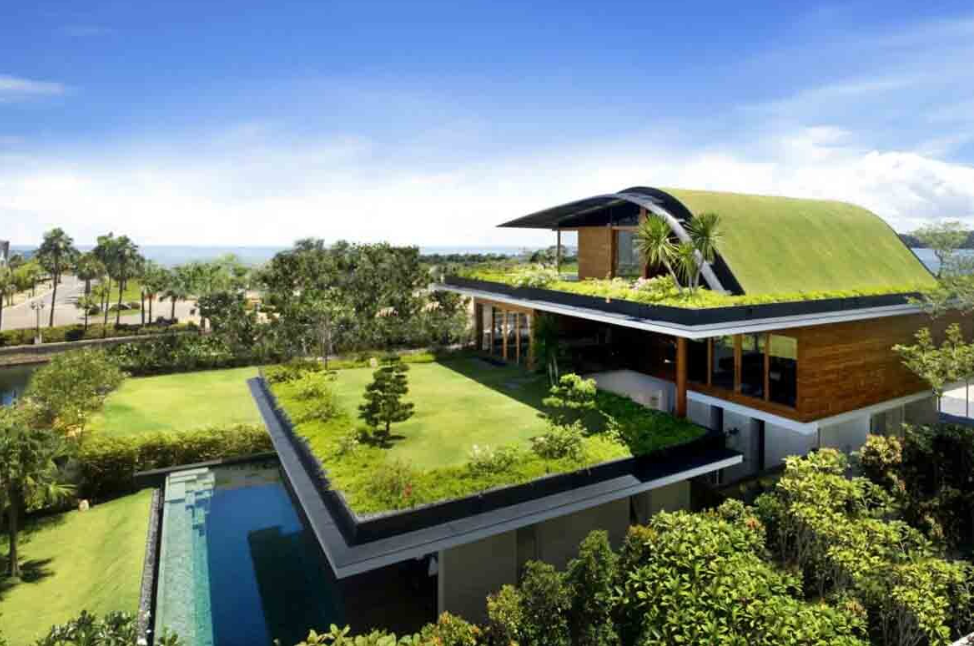
c.) Passive House Design
A passive house is intended to be ultra-energy-efficient and utilizes passive methods in heating up and cooling the interior of the house. It makes use of passive techniques, which include solar gain, a high degree of insulation, and airtight construction that achieves up to a 90% reduction in heating and cooling energy.
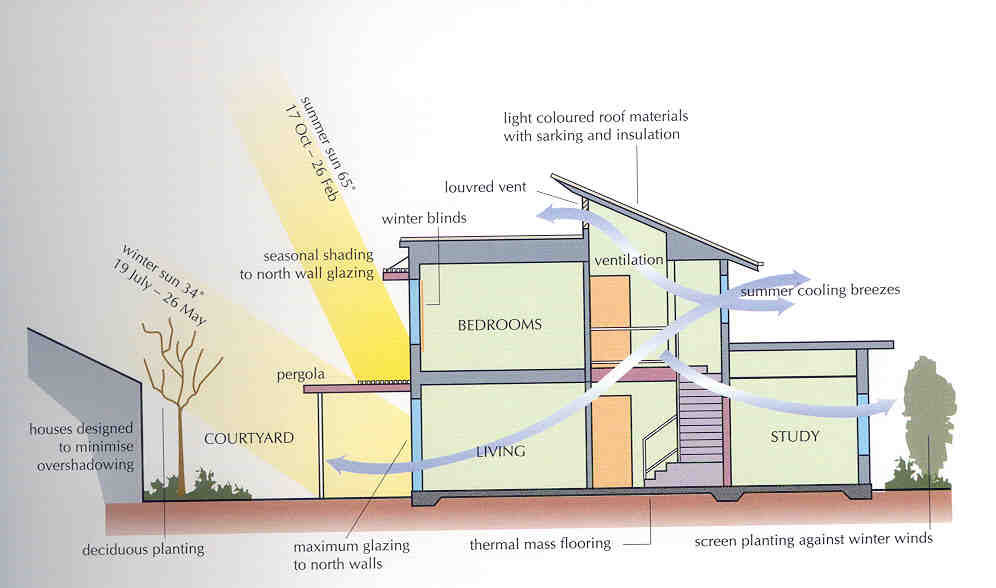 Image source: Green Home Technology Center
Image source: Green Home Technology Center
d.) Off-grid homes
These are free-standing and operate off the electrical grid, being fed from solar or wind power. Off-grid houses are often self-sufficient with rainwater catchment, waste, and farming.
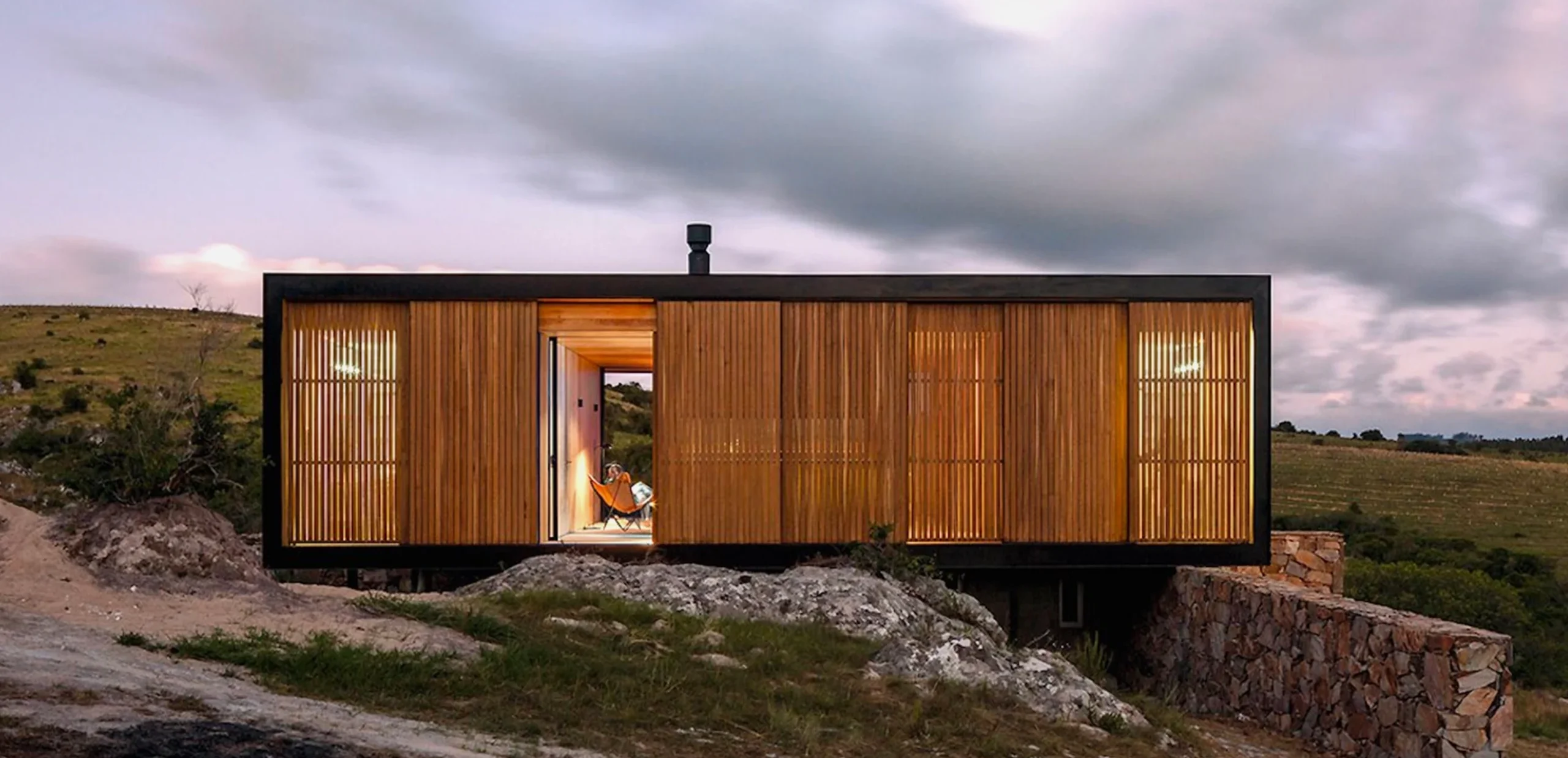
e.) Zero Energy Home
This type of home produces as much energy as it consumes, often through renewable generation and efficiency measures. The U.S. Department of Energy states that zero-energy homes are able to reduce household energy costs to nearly zero.
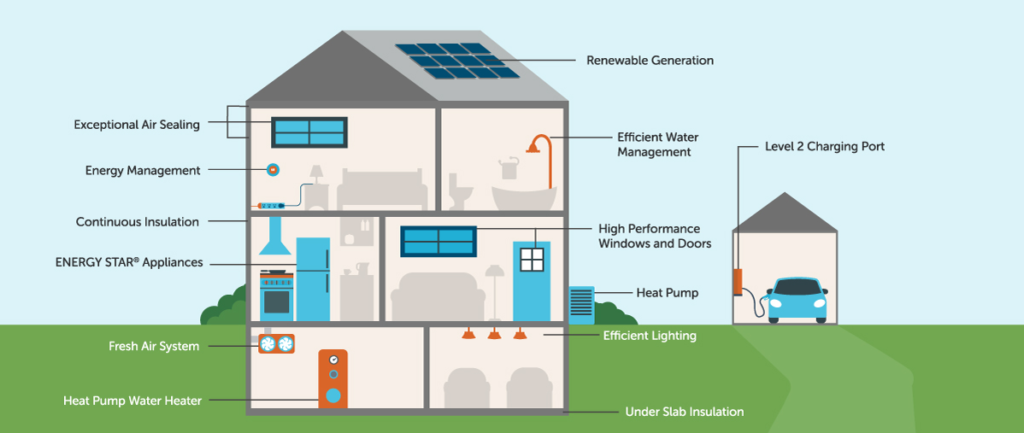 Image source: EfficiencyVermont
Image source: EfficiencyVermont
f.) Net-Zero Homes
Similar to zero-energy homes, this goes a step beyond by having net-zero homes create more energy than they use. This excess energy could also be sold back to the grid, making these homes not just sustainable but economically viable as well.
| Type of Home | Energy Consumption (kWh/Year) | Energy Production (kWh/Year) | Net Energy Use |
|---|---|---|---|
| Traditional Home | 12,000 | 0 | 12,000 |
| Passive House | 2,500 | 0 | 2,500 |
| Zero-Energy Home | 3,000 | 3,000 | 0 |
| Net-Zero Home | 2,800 | 3,500 | -700 |
Creating a Sustainable Community
Sustainable housing is much more than individual houses; rather, it should be about community building with sustainability at its heart. Such communities foster environmental stewardship, social equity, and economic vitality.
- Sustainable Transportation: Community involvement with public transportation, biking, and walking can greatly reduce the carbon footprint for transportation in a community. Communities can also provide shared electric vehicle programs and sufficient bike storage.
- Community Gardens: Besides offering fresh, locally grown produce, community gardens reduce the carbon footprint created by food transportation. They can even serve as valuable community builders and educators on sustainable agriculture.
:max_bytes(150000):strip_icc():format(webp)/102793756-community-garden-and-greenhouse-photo-by-meredith-6cfd0cbabbb14a568fb9e9bca735fef9.jpg) Image source: AllRecipes
Image source: AllRecipes
- Renewable Energy: Larger community-wide projects in renewable energy—such as solar farms or wind turbines—can have far-reaching impacts in reducing reliance on non-renewable energy sources and lowering utility costs for residents.
- Green Infrastructure: Green infrastructure investment can be considered a potential positive factor for the community to face climate change through managing stormwater, reducing heat islands, and improving air quality with mechanisms like green roofs and rain gardens.
- Social Equity: For any community to be truly sustainable, it has to be inclusive—from affordable housing to access to education to healthcare. Thus, each resident will have an equal opportunity to use community resources and opportunities.
So what’s the future of sustainable housing like?
It is fair to say that going into the future, sustainable housing is likely to become even more important.
Consequently, due to these factors, changing consumer preferences, government incentives, and technological advances have contributed to the growth of the industry.
a.) Modular and Prefab Construction
Off-site modular and prefabricated construction methods are at the very core of new, more efficient, and sustainable approaches to building. It is a method whereby components are put together at another location from the site and then finally assembled at the site.
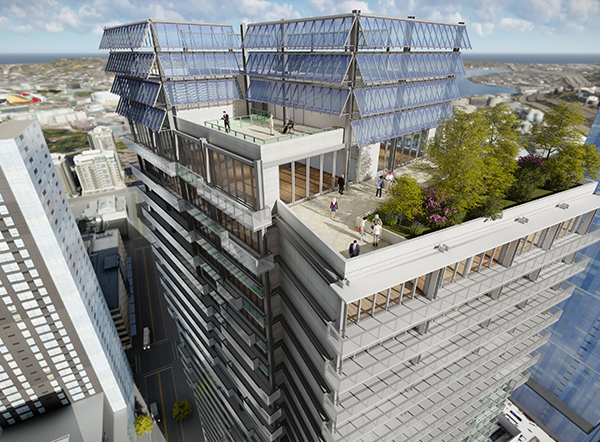
It reduces waste, quickens the time spent on construction, and may reduce costs. According to the Modular Building Institute, modular construction cuts down waste by as much as 90%.
b.) Advanced Materials and Technologies
New materials and technologies are being developed that continue to push the envelope on what sustainable housing can be. Innovations also made homes not only more efficient but even durable, adaptable, and eco-friendly.
- Biomaterials: Mycelium is a fungus-based material; biobricks are made from bacteria; and algae is a building material. These are just some biomaterials researchers look at. Such materials are renewable, biodegradable, and mostly possess excellent properties for insulation, making them ideal for sustainable construction.
- Phase-Change Materials: PCMs can store and release thermal energy, which improves indoor temperatures. These materials can absorb heat during the day and then release it at night to minimize heating and cooling systems.
- Aerogels: Being touted as one of the world’s best insulators, these lightweight materials can really provide excellent thermal insulation without being too heavy. This is excellent for windows, walls, and roofs where space is precious.
- 3D Printing: This is yet another use of 3D printing in construction. Construction of complicated structures could be done only through the generation of minimal waste. Thereby, 3D-printed houses are more sustainable as they can be built faster and with fewer materials compared to traditional methods. As an example, up to 60% waste in material will be able to be saved due to 3D-printed concrete structures.
- Smart Glass: Smart glass, also known as electrochromic glass, has variable transparency depending on sunlight input that reduces the need for artificial lighting and heating. It allows windows to automatically tint in bright sunlight, reducing cooling loads and enhancing comfort.
- Building-Integrated Photovoltaics (BIPV): Unlike separately mounted panels, BIPV systems integrate them into the building materials like roof tiles or facades. Beyond generating renewable energy, it creates a more aesthetic appeal to your home.
c.) Government Incentives and Policies
More and more governments are recognizing that the future of sustainable housing is bright and are putting policies and incentives in place to encourage its growth.
The incentives and regulations are supposed to make the impact of the buildings on the environment as minimal as possible, while at the same time making the shift to sustainable housing accessible and affordable.
- Tax Credits and Rebates: Most of the governments have on offer tax credits, rebates, or grants for each homeowner who invests in energy-efficient upgrades or even renewable energy systems. In the United States alone, the federal government has extended tax credits for installing solar panels, energy-efficient windows, and other such sustainable home improvements.
- Green Building Codes and Standards: Building codes and standards set by LEED (Leadership in Energy and Environmental Design) and BREEAM (Building Research Establishment Environmental Assessment Method) are the minimum requirements that set a benchmark for sustainable building. Those houses that meet the same standards normally receive incentives and are saleable at a higher resale value.
- Zero-Energy Mandates: Many areas are introducing mandates that will make new homes zero-energy or near zero-energy on a specific date. Examples include the European Union’s proposed Energy Performance of Buildings Directive, which will require all new buildings to be nearly zero-energy as of 2021 and get further enhanced from 2028.
- Subsidies on Sustainable Materials: Most governments give subsidies on sustainable building materials like recycled steel, bamboo, and low-VOC paints. This can help bring down the cost of sustainable construction and encourage more people to move towards it.
- Carbon Pricing and Emissions Trading: Carbon pricing and emissions trading schemes can create a variety of financial incentives for lowering GHG emissions. Builders and developers who apply sustainability measures may have the opportunity to reduce costs or sell carbon credits.
Case Studies: Successful Sustainable Housing Projects
To understand the potential of sustainable housing better, let’s have a look at some case studies:
1. Auroville Earth Center, India
This eco-village has been leading by example on sustainable living since 1968, when it was born. The Earth Center showcases different types of sustainable housing options, from geodesic domes to straw bale houses and rammed earth structures.
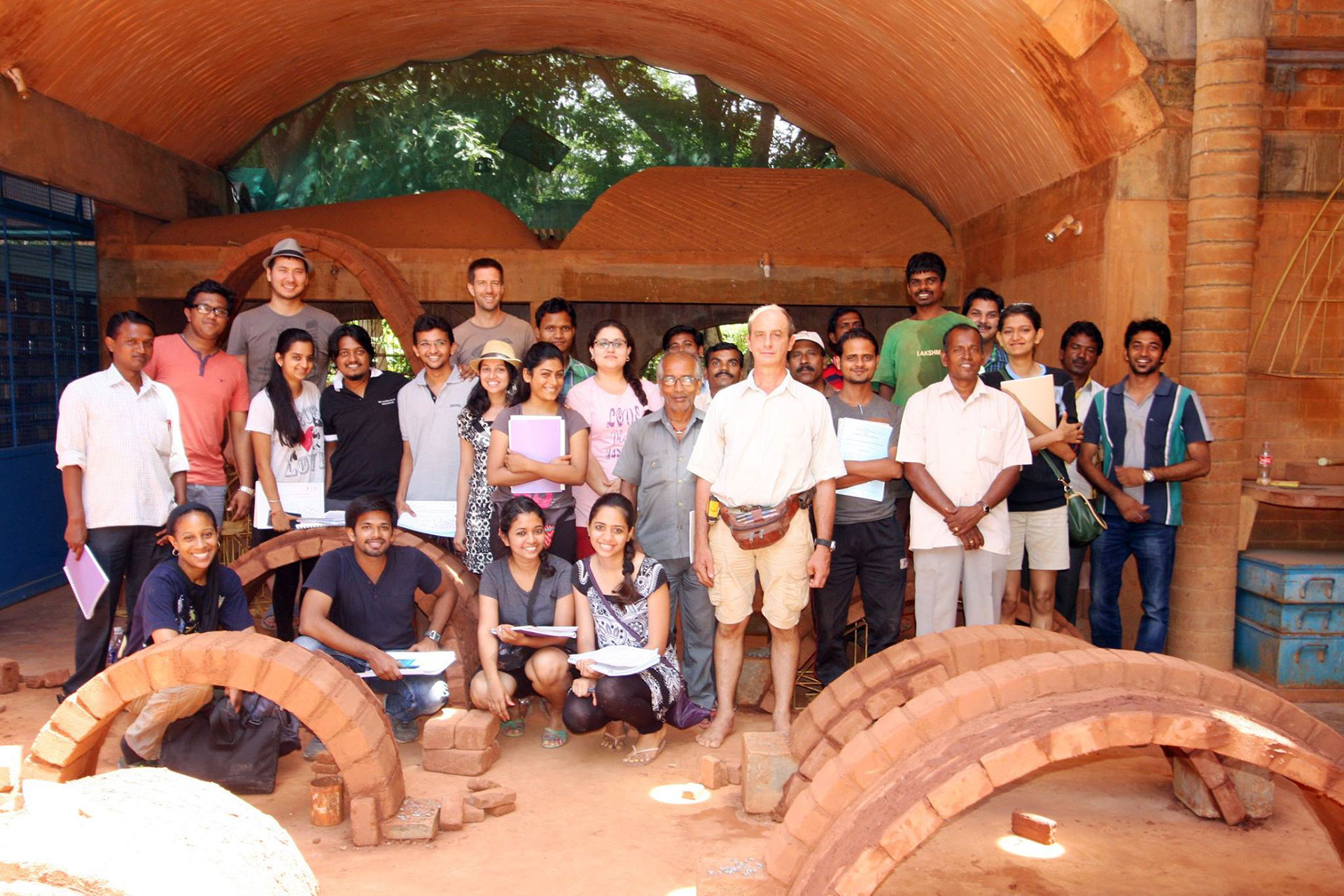 Image source: auraville.org
Image source: auraville.org
2. The Village at Harmony Hill, United States
About 50 homes have so far been constructed in Oregon as a model village to apply all principles of sustainable living. Some of the energy-saving features of such homes include solar panels, community gardens, and shared transportation modes.
Video source: prarch.com
3. The BedZED Development, United Kingdom
London’s first truly sustainable housing development boasts a range of ecofriendly features, from solar panels to wind turbines and a shared community garden.
 Image source: BedZed
Image source: BedZed
Consumer Preferences and Market Trends
The trend for consumer preference in housing has started to shift towards more sustainable alternatives with the increased awareness of environmental issues. Some key market trends reflect this shift:
- Increased demand for green homes: People increasingly consider sustainability when selecting a home. According to the 2023 survey provided by Green Builder Media’s latest COGNITION, a definite 70% of buyers are willing to pay more for a home with green features.
- Luxury and sustainability remain intertwined within the luxury housing market, from green roofs to sophisticated energy management systems and eco-friendly materials. The luxury buyers in this segment are looking for homes that combine upscale touches with sustainability.
- Urbanization and Smart Cities: Increased urbanization is leading cities to develop and implement sustainable infrastructure in terms of green buildings, public transport systems, and renewable energy. Sustainable housing is deeply connected with the concept of smart cities; a smart city employs advances in technology towards optimizing urban living.
- Eco-Friendly Renovations: Most homeowners today are caught in a dilemma between making their existing dwellings more sustainable and relocating to a new location. This has caused an increase in popularity for such upgrades as the installation of solar panels, adding insulation, and replacing inefficient old windows with new ones.
- Community Living: Sustainable housing is increasingly being incorporated into the broader context of sustainable community-living projects. Green parks, community resources, and social bonding have always been one of the most important aspects of any good development.
Challenges and Opportunities in Sustainable Housing
As much as the movement of sustainable housing is gaining momentum, there is a need for several challenges to be targeted so that further development may be achieved.
Challenges
- Cost: The initial cost to build or retrofit a home to be sustainable can be higher than traditional methods. While often these costs are offset by the long-term savings, the high upfront expense prohibits it for some homeowners.
- Educating consumers: Most consumers are either unaware of the benefits associated with sustainable housing or have several misconceptions about their costs and complexities. The advantages of living sustainably need to be disseminated to the public in order for wider diffusion to take place.
- Regulatory Challenges: Most building codes, as well as regulations in some areas, may not be fully supportive of sustainable practices; hence, they limit the application of certain technologies or designs. Barriers of this kind require several advocacy efforts and policy change to eliminate them.
- Supply Chain Problems: Availability of sustainable materials and technologies is usually limited in certain areas. Disruption and shortage within such supply chains raise costs and delay projects.
- Climate Adaptation: As climate change accelerates, it is time for housing to really focus on resilience. In the near future, houses will have to be designed and constructed against stronger, more frequent weather events, which may require newer materials and ways of construction.
Opportunities
- Innovation: These challenges in sustainable housing open up opportunities for innovation in materials, design, and ways of building. The companies that can develop new solutions will be well-placed to lead this growing market.
- Social Benefits: Housing demand for sustainability is creating jobs in green construction, renewable energy, and other sustainable design vocations. As the industry grows, so will the jobs within it.
- Partnerships: Government, business, and community collaboration can drive uptake. It will take public-private partnerships, community initiatives, and international cooperation to achieve scale.
- Technological Advancements: These will be augmented through technological changes such as smart home technologies, renewable energy, and sustainable materials. These technologies will make the construction and living in sustainable homes easier and cheaper in the future.
- Global Impact: At a time when sustainable housing is becoming more mainstream, it holds the capacity to contribute much toward solving the global menace of climate change. In this regard, reduction of carbon emissions and saving resources will have to complement sustainable ways of living, to which the housing sector can actually contribute significantly for a greener future.
Conclusion: The Way Ahead for Sustainable Housing
Sustainable housing epitomizes an important confluence of environmental stewardship, economic opportunity, and social responsibility. In the face of climate change, resource depletion, and urbanization, the need for sustainable living is paramount.
New technological advances, materials, and design are just beginning to point homes toward efficiency, resilience, and ecological consciousness. In all, this transformation will require the concerted effort of all levels of government, businesses, and consumers.
We need to embrace sustainable methods of building homes and communities that meet our needs today and protect the environment for the next generation.
Sustainable housing may be an environmentalist decision, but a very savvy one at that: It allows for the realization of financial, health, and social benefits all at once. As more people become aware and as the field continues to innovate, even more innovations will follow that make sustainable housing the norm in both new developments and renovations.
The shift to sustainable housing is not a mere trend; it’s a foundational building block for our future.
Must Read: Top 20 Real Estate Market Predictions for 2024/2025: What Should We Expect?


